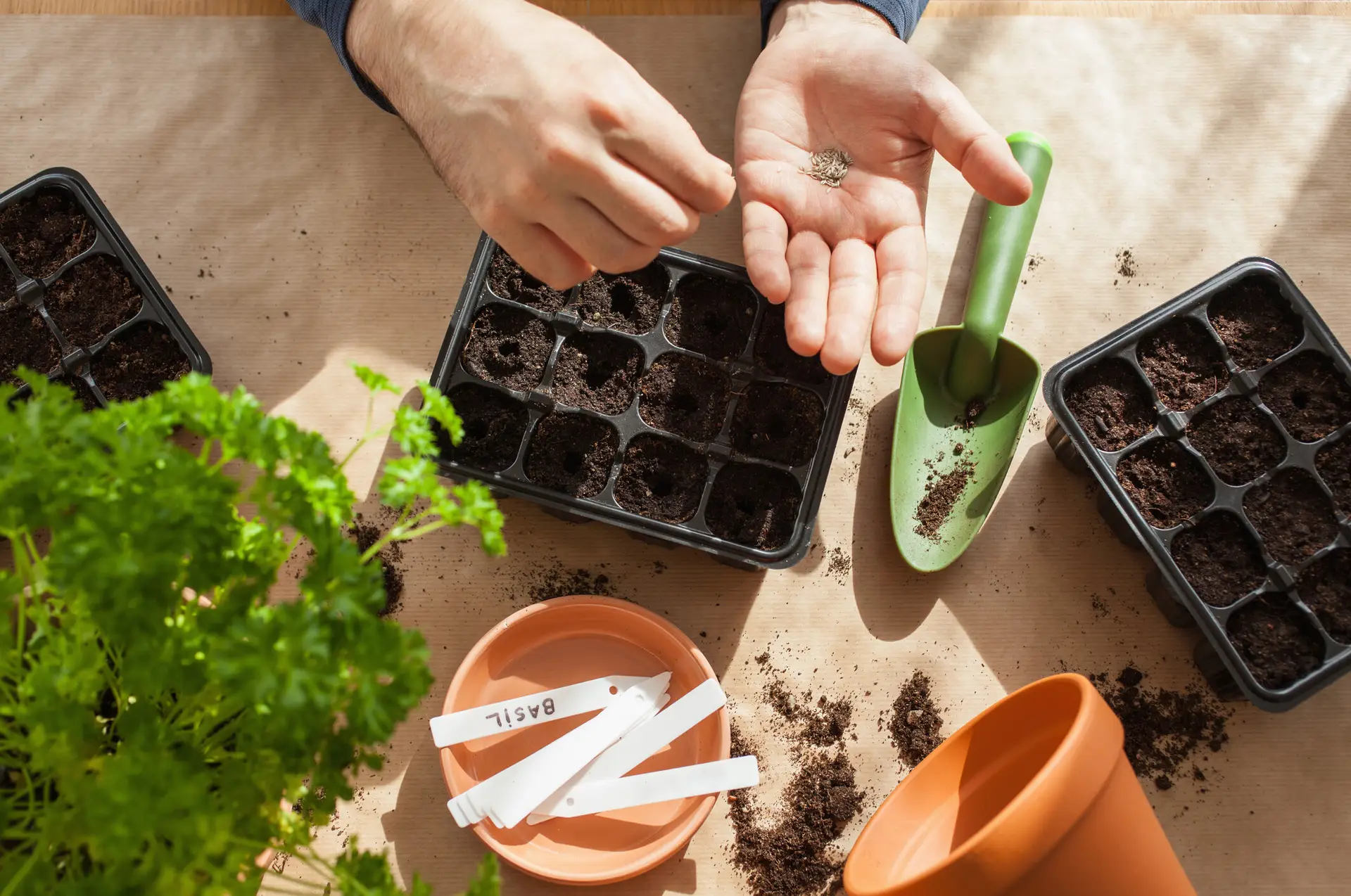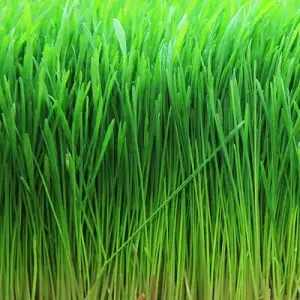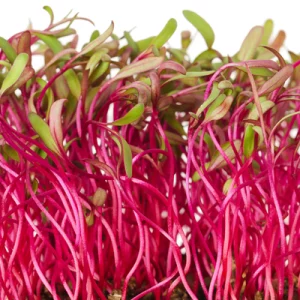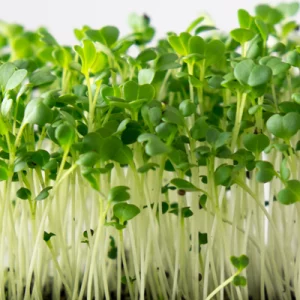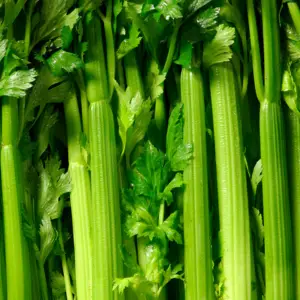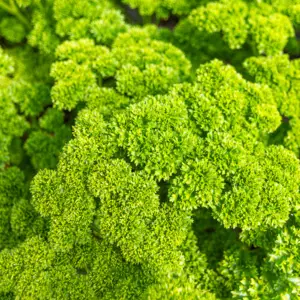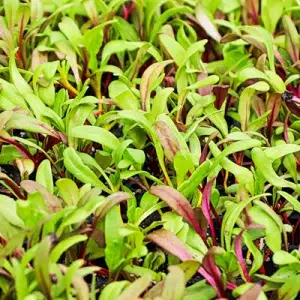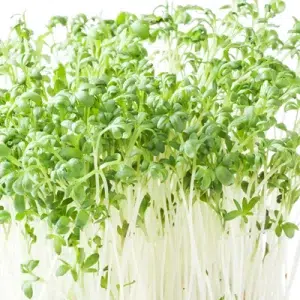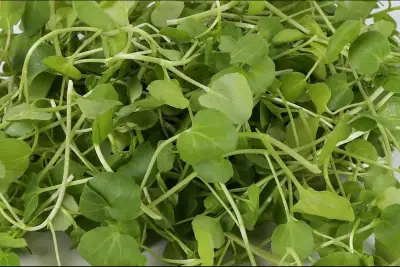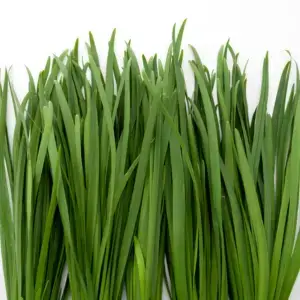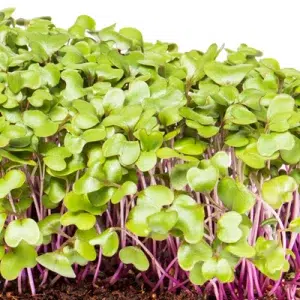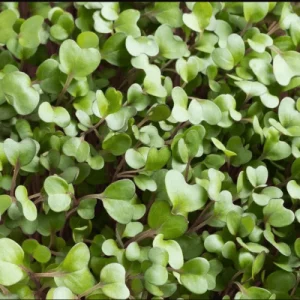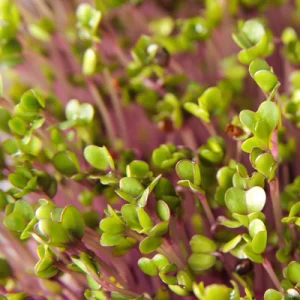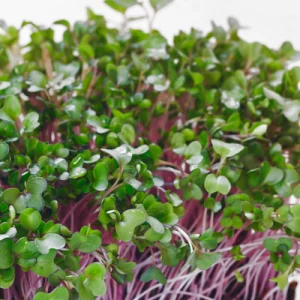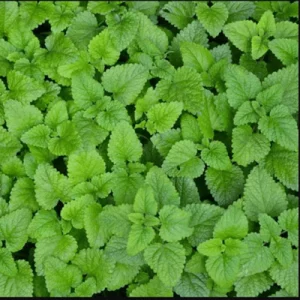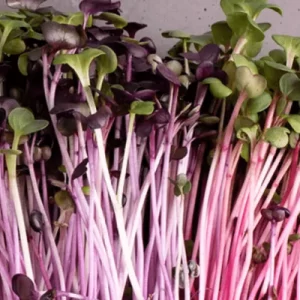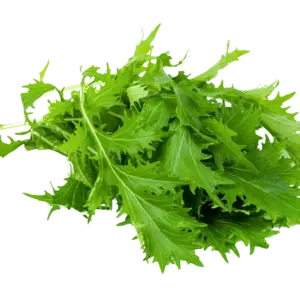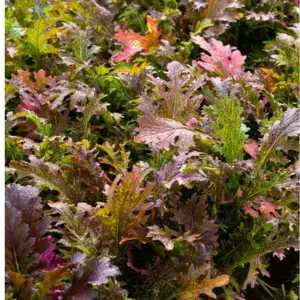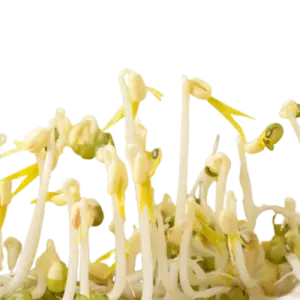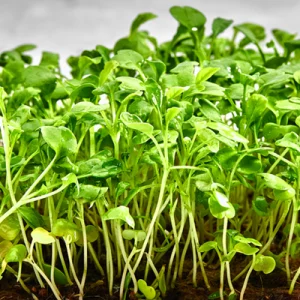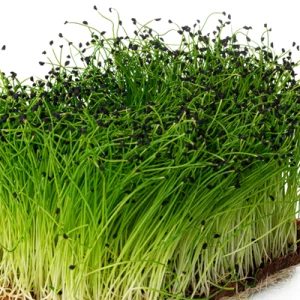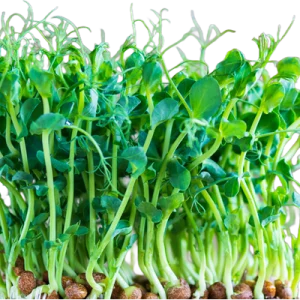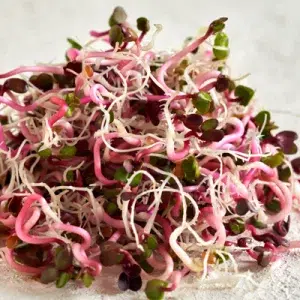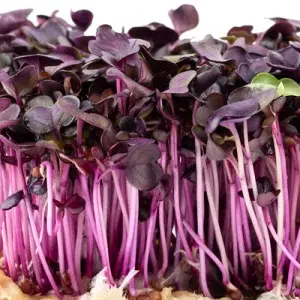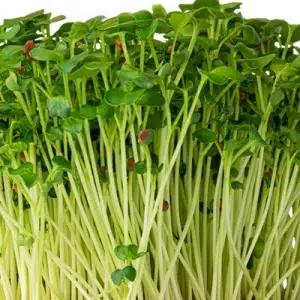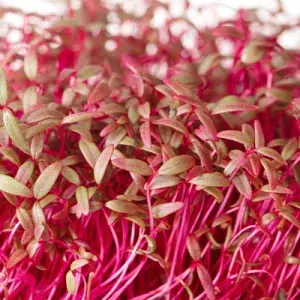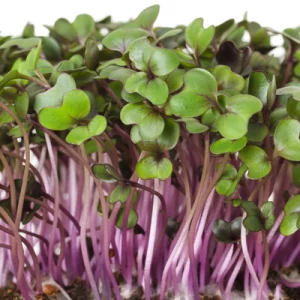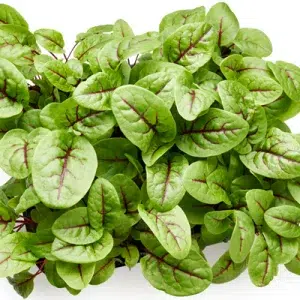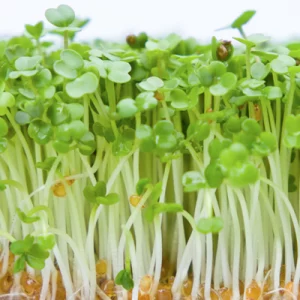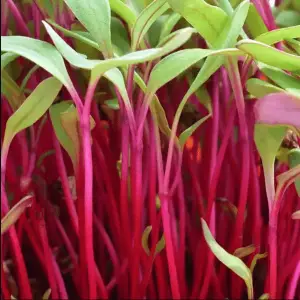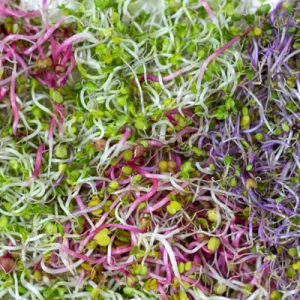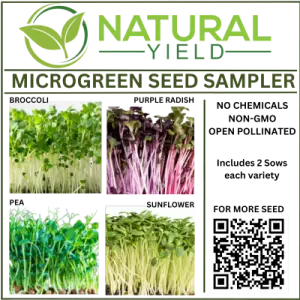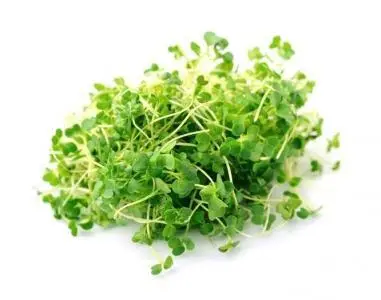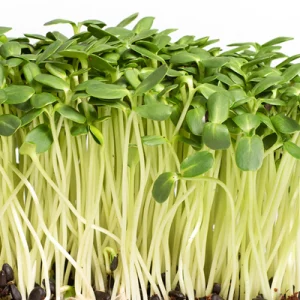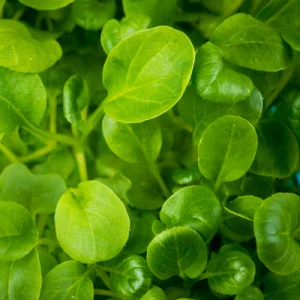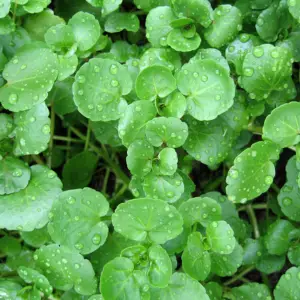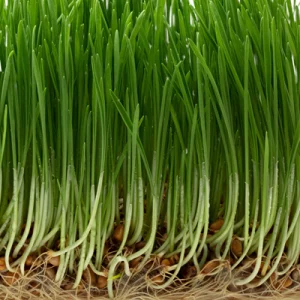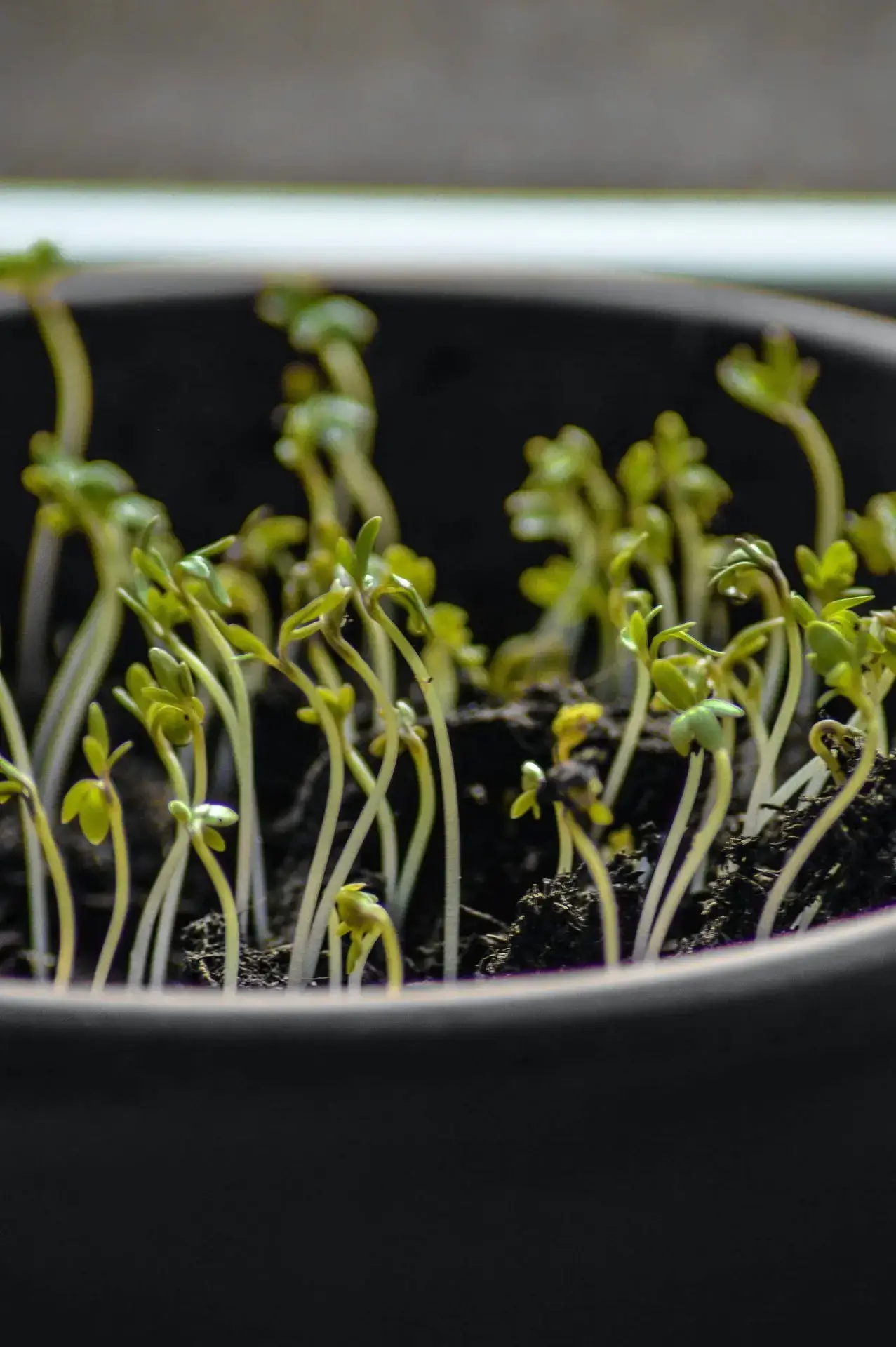Microgreen Seeds - Freshest, Healthiest and Highest Quality
We're passionate about providing our customers with the highest quality microgreen and vegetable seeds for your needs. Our selection of seeds is carefully curated to ensure you get the freshest, healthiest seeds available - heirloom, non-gmo, and pesticide free with a growing number of organic options.
Microgreen Seed Shop
Barley Seed
$5.90 – $16.50Price range: $5.90 through $16.50Beetroot Microgreen (Bull’s Blood) Seeds
$19.99 – $111.00Price range: $19.99 through $111.00Beetroot Microgreen (Ruby Queen) Seeds
$9.99 – $74.99Price range: $9.99 through $74.99Broccoli Microgreen Seeds
$7.00 – $77.00Price range: $7.00 through $77.00Celery Seeds
$30.00 – $154.00Price range: $30.00 through $154.00Chervil Seeds
$30.00 – $153.00Price range: $30.00 through $153.00Colour Mix Chard Seeds
$6.00 – $95.00Price range: $6.00 through $95.00Coriander Microgreen Seeds
$6.00 – $53.00Price range: $6.00 through $53.00Cress Seeds
$32.00 – $824.00Price range: $32.00 through $824.00Garlic Chive Seeds
$40.00 – $216.00Price range: $40.00 through $216.00Green Cabbage Seeds
$8.00 – $115.00Price range: $8.00 through $115.00Kale Black Seeds
$11.00 – $66.00Price range: $11.00 through $66.00Kale Red Russian Microgreen Seeds
$6.00 – $96.00Price range: $6.00 through $96.00Kohlrabi Purple Microgreen Seeds
$7.00 – $125.00Price range: $7.00 through $125.00Lemon Balm Seeds
$7.00 – $583.00Price range: $7.00 through $583.00Mixed Radish Seeds
$6.00 – $14.99Price range: $6.00 through $14.99Mizuna Green Seeds
$12.00 – $63.00Price range: $12.00 through $63.00Mizuna Red Seeds
$35.00 – $213.00Price range: $35.00 through $213.00Mung Bean Seeds
$16.00Mustard Green Seeds
$7.00 – $95.00Price range: $7.00 through $95.00Onion White Microgreen Seeds
$11.00 – $285.00Price range: $11.00 through $285.00Pea Microgreen Seeds
$9.00 – $17.00Price range: $9.00 through $17.00Pink Radish Seeds
$8.00 – $90.00Price range: $8.00 through $90.00Purple Radish Seeds
$8.00 – $99.99Price range: $8.00 through $99.99Radish Daikon Seeds
$9.00 – $27.00Price range: $9.00 through $27.00Red Amaranth Seeds
$43.00 – $311.00Price range: $43.00 through $311.00Red Cabbage Seeds
$7.00 – $107.00Price range: $7.00 through $107.00Red Veined Sorrel Seeds
$96.00 – $782.00Price range: $96.00 through $782.00Rocket Seeds
$7.00 – $85.00Price range: $7.00 through $85.00Ruby Chard Seeds
$8.00 – $74.00Price range: $8.00 through $74.00Salad Mix Microgreen Seeds
$8.00 – $127.00Price range: $8.00 through $127.00Spinach Microgreen Seeds
$9.99 – $139.99Price range: $9.99 through $139.99Sunflower Seeds
$8.00 – $128.70Price range: $8.00 through $128.70Tatsoi Vegetable Seeds
$8.00 – $60.00Price range: $8.00 through $60.00Watercress Seeds
$36.00 – $825.00Price range: $36.00 through $825.00Wheatgrass Microgreen Seeds
$8.00 – $99.99Price range: $8.00 through $99.99Why Choose Natural Yield Microgreen Seeds?
At Natural Yield Seeds, we believe that microgreens are more than just a trendy food item – they're a way to nourish your body and enhance your health. Sourcing the large volume of seeds in quantities required for microgreen growers is challenging! We shop around to get the best prices and continuity we can. This includes a preference for working with local Australian growers and distributors, but also requires us to go overseas when the Australian market just can't provide.
Seeds that are on Backorder vs Out of Stock
Seeds that are on backorder typically involve a 2-3 day delay as we get them shipped from our suppliers (growers and distributors) before we get them shipped to you. This ensures we are not holding seed stock longer than we need to, which in turn gives you the youngest seeds. If an item is out of stock it means that we cannot supply it at this time.
Please note that we cannot ship seeds to TAS or WA. If you have any seeds in your cart (including mixed with other types of products) you will not be presented with any shipping options at checkout.
Microgreen Seeds FAQ
Microgreen seeds are essentially the same as regular seeds.The difference lies in how they are marketed and used. Microgreen seeds are typically varieties that are known to germinate quickly and produce flavorful seedlings. While you can technically use regular seeds for microgreens, microgreen seeds are often preferred for their higher germination rates and consistent quality
The cost of microgreen seeds can vary depending on the type of seed, the quantity you're purchasing, and the supplier. However, in general, microgreen seeds tend to be a bit more expensive than regular seeds. This is because they are often varieties specifically chosen for their suitability for growing microgreens, and they may also be subject to more stringent quality control measures.
Here are some factors that can affect the price of microgreen seeds:
- Type of seed: Some varieties of microgreens, such as rarer or more specialized ones, will naturally cost more than common ones.
- Quantity: Buying in bulk often reduces the price per seed, while smaller packets will be more expensive per seed. Natural Yield builds in bulk discounts directly into the pricing.
- Supplier: Different seed suppliers may have different pricing structures, so it's worth comparing prices before making a purchase. Natural Yield strives to keep our microgreen seed pricing very competitive.
- Organic or non-organic: Organic microgreen seeds may be more expensive than non-organic ones due to the additional costs associated with organic certification.
Here are some resources where you can find microgreen seeds and compare prices:
- Online seed suppliers: Many online retailers specialize in selling microgreen seeds, offering a wide variety of options and often competitive prices.
- Local garden centers or nurseries: Some local stores may also carry microgreen seeds, though their selection might be more limited.
- Seed catalogs: Seed catalogs often feature a section dedicated to microgreen seeds, providing detailed information about each variety and its price.
Here are some tips for saving money on microgreen seeds:
- Buy in bulk: If you plan on growing microgreens regularly, consider buying seeds in bulk to reduce the per-seed cost.
- Choose common varieties: Common microgreen varieties like radish, broccoli, or sunflower are generally less expensive than rarer ones.
- Compare prices from different suppliers: Shop around and compare prices from different seed suppliers to find the best deals.
- Consider saving your own seeds: If you're growing microgreens for personal use, you can potentially save seeds from some varieties for future use.
Remember that while microgreen seeds might be slightly more expensive than regular seeds, the cost is often justified by the higher quality and suitability for growing microgreens.
Microgreen seeds are the seeds of various plants, such as vegetables, herbs, or even flowers, that are grown specifically to be harvested and eaten when they are very young, typically just a few weeks after sprouting. These tiny plants, known as microgreens, are packed with flavor and nutrients, and they add a vibrant touch to dishes.
Here are some key characteristics of microgreen seeds:
- Variety: Microgreen seeds come from a wide range of plant species, including common vegetables like broccoli, radish, and kale, as well as herbs like basil and cilantro.
- Quality: Microgreen seeds are often selected for their high germination rates and their ability to produce healthy, flavorful microgreens.
- Size: Microgreen seeds are generally small, as they are meant to grow into compact microgreens.
- Purpose: Microgreen seeds are specifically intended for growing microgreens, which are different from mature plants. Microgreens are harvested at an early stage, when they have just a few leaves and are still tender and delicate.
Microgreens are a popular ingredient in culinary dishes due to their intense flavors, vibrant colors, and nutritional benefits.
They are often used as garnishes, added to salads, sandwiches, and soups, or incorporated into other dishes to enhance their taste and visual appeal.
Microgreen seeds, when stored properly, can remain viable for one to three years, depending on the type. Here are some tips for storing microgreen seeds:
- Store in a cool, dry place: The ideal storage temperature for microgreen seeds is between 40 and 50 degrees Fahrenheit (4-10 degrees Celsius). Avoid storing them in direct sunlight or in humid conditions.
- Keep them in airtight containers: Place your seeds in airtight containers, such as glass jars or resealable bags, to prevent them from absorbing moisture and oxygen.
- Label your containers: Include the name of the seed variety, the date of purchase, and the expiration date on the container label.
- Check on your seeds periodically: Inspect your seeds for signs of spoilage, such as mold or mildew, every few months. If you notice any signs of spoilage, discard the seeds.
Here are some additional tips for extending the shelf life of microgreen seeds:
- Choose high-quality seeds: Purchase microgreen seeds from reputable suppliers that sell fresh, high-quality seeds.
- Store them in small quantities: Larger quantities of seeds may be more difficult to store properly and may have a shorter shelf life.
- Avoid freezing seeds: While freezing can extend the shelf life of some types of seeds, it can damage microgreen seeds.
By following these tips, you can help ensure that your microgreen seeds remain viable for as long as possible.
Here are some additional resources that you may find helpful:
Microgreen seeds and sprouting seeds are essentially the same.
The difference lies in how they are grown and harvested. Microgreens are grown in soil or another growing medium and harvested when they are a few inches tall, while sprouts are grown in water and harvested when they are just a few days old.
The best microgreen seeds depend on your personal preferences and growing conditions. However, some popular and easy-to-grow options include:
- Radish: Radish microgreens are fast-growing and have a spicy flavor that adds a kick to any dish.
- Broccoli: Broccoli microgreens are mild and nutritious, making them a great addition to salads, sandwiches, and smoothies.
- Sunflower: Sunflower microgreens have a nutty flavor and a crunchy texture, making them a delicious snack or topping for salads and soups.
- Pea: Pea microgreens are sweet and tender, with a delicate flavor that complements many dishes.
- Arugula: Arugula microgreens have a peppery flavor that adds a zing to salads, sandwiches, and pizzas.
Here are some factors to consider when choosing microgreen seeds:
- Flavor: Some microgreens have a mild flavor, while others are more spicy or peppery.
- Growth rate: Some microgreens grow faster than others.
- Nutritional value: All microgreens are nutritious, but some are particularly rich in certain vitamins and minerals.
- Appearance: Microgreens come in a variety of colors and textures.
Ultimately, the best way to choose microgreen seeds is to experiment with different varieties and see which ones you like best.
Here are some resources where you can find microgreen seeds:
- Online seed suppliers: Many online retailers specialize in selling microgreen seeds, offering a wide variety of options and often competitive prices.
- Local garden centers or nurseries: Some local stores may also carry microgreen seeds, though their selection might be more limited.
- Seed catalogs: Seed catalogs often feature a section dedicated to microgreen seeds, providing detailed information about each variety and its price.
Here are some tips for choosing high-quality microgreen seeds:
- Look for seeds that are specifically labeled for microgreens. These seeds are often selected for their high germination rates and their ability to produce healthy, flavorful microgreens.
- Choose seeds from a reputable supplier. This will help ensure that you are getting high-quality seeds that are free from contaminants.
- Check the germination rate. The germination rate is the percentage of seeds that are expected to sprout. Choose seeds with a high germination rate to ensure that you get a good yield.
- Consider the cost. Microgreen seeds can vary in price. Compare prices from different suppliers to find the best deal.
By following these tips, you can choose the best microgreen seeds for your needs and enjoy a bountiful harvest of delicious and nutritious microgreens.
While freezing extends the shelf life of some seeds, it's generally not recommended for microgreen seeds. Here's why:
- Moisture Content: Seeds contain a certain amount of moisture. Freezing can cause this moisture to crystallize, damaging the seed embryo and reducing viability. This is especially true for microgreen seeds, which are often stored in less controlled environments than long-term seed storage.
- Germination Rates: Even if the seeds don't appear visibly damaged, freezing can significantly decrease their germination rate. You might end up with a poor yield or no growth at all.
- Purpose of Microgreen Seeds: Microgreen seeds are typically used relatively quickly. They aren't meant for long-term storage like regular garden seeds. Therefore, the risks associated with freezing usually outweigh any potential benefits.
Instead of freezing, focus on proper storage for microgreen seeds:
- Cool, Dark, and Dry: Store them in a cool, dark, and dry place. A pantry or cupboard away from direct sunlight and heat sources is ideal.
- Airtight Containers: Use airtight containers like glass jars or sealed plastic bags to protect them from moisture and pests.
- Labeling: Label the containers with the seed type and purchase date. This helps you keep track of their freshness.
If you absolutely must freeze seeds:
- Only as a last resort: If you have a large quantity of a specific type and are concerned about them going bad before you can use them, freezing might be considered.
- Proper Preparation: Ensure the seeds are thoroughly dry before freezing. Double-bag them in airtight containers to minimize moisture exposure.
- Thawing: When you're ready to use them, thaw them slowly in the refrigerator before bringing them to room temperature.
However, again, freezing is generally not the best approach for microgreen seeds. Proper storage at room temperature is usually sufficient since they are intended for relatively short-term use.
The number of microgreen seeds per tray depends on several factors, including:
- Tray size: Standard 10x20 inch trays are common, but you might use smaller ones.
- Seed size: Larger seeds like peas need more space than tiny ones like broccoli.
- Microgreen type: Some varieties grow denser than others.
- Growing method: Soil vs. hydroponics can affect spacing.
General Guidelines:
- Even coverage is key: Aim for a uniform layer of seeds across the tray.
- Don't overcrowd: Too many seeds can lead to poor air circulation and disease.
- Seed packet instructions: Often provide specific recommendations.
Here are some starting points:
- Small seeds (broccoli, radish): 28g to 40g seeds per 1020 tray
- Large seeds (peas, sunflower): 140g to 200g seeds per 1020 tray
Experimentation is best:
- Start with a small batch: See how your chosen seeds grow in your setup.
- Adjust as needed: You might need to tweak the amount for future trays.
Resources:
- Seed suppliers: Often provide guides or calculators on their websites. Natural Yield provides detailed instructions on every seed packet we send.
- Online communities: Share tips and experiences with other growers.
By paying attention to these factors and experimenting, you'll find the ideal seeding density for your microgreens.
Whether or not you need to soak microgreen seeds depends on the type of seed you're using. Here's a breakdown:
Seeds that benefit from soaking:
- Larger seeds: Seeds like peas, sunflower, buckwheat, and beet have a thicker outer shell that can benefit from soaking. Soaking helps soften the shell and speeds up germination.
- Seeds with dormancy: Some seeds have a natural dormancy period that needs to be broken before they can germinate. Soaking can help break this dormancy.
Seeds that don't need soaking (or may be harmed by it):
- Small seeds: Tiny seeds like arugula, amaranth, broccoli, radish, and kale generally don't need soaking. They can absorb moisture quickly enough without it.
- Mucilaginous seeds: Seeds that form a gel-like coating when wet (like chia, basil, cress, and flax) should not be soaked. This gel can make them difficult to handle and can lead to clumping or mold growth.
General Guidelines:
- Check the seed packet: The best source of information is always the seed packet itself. It should provide specific instructions for soaking or not soaking.
- When in doubt, soak (for larger seeds): If you're unsure, it's generally better to soak larger seeds. Just be sure not to over-soak them.
- Experiment: You can always experiment with soaking and not soaking to see what works best for your specific seeds and growing conditions.
Benefits of soaking:
- Faster germination: Soaking can speed up the germination process by several hours or even days.
- Improved germination rates: Soaking can help improve the percentage of seeds that germinate.
- More even growth: Soaking can lead to more consistent and even growth of your microgreens.
Risks of over-soaking:
- Rotting: If seeds are soaked for too long, they can start to rot.
- Mold growth: Over-soaking can also increase the risk of mold growth.
- Drowning: Seeds need oxygen to germinate. Over-soaking can deprive them of oxygen and prevent them from sprouting.
How to soak seeds:
- Rinse the seeds with clean water.
- Place the seeds in a bowl and cover them with water.
- Soak for the recommended time (usually 6-12 hours, but check your seed packet).
- Drain the water and rinse the seeds again.
- Plant the seeds immediately.
By following these guidelines, you can ensure that your microgreen seeds get the best possible start and grow into healthy, delicious microgreens.
Germinating microgreen seeds is the crucial first step to growing these nutrient-packed little greens. Here's a breakdown of how to do it successfully:
- Seed Selection & Preparation
- Choose the right seeds: Opt for high-quality seeds specifically intended for microgreens. They often have higher germination rates and are disease-resistant.
- Soaking (optional but recommended): Soaking larger seeds (like peas, sunflower, buckwheat) for 6-12 hours in water can significantly speed up germination. Smaller seeds (like radish, broccoli) may not need soaking. Check your seed packet for recommendations.
- Rinsing: Before soaking or planting, rinse your seeds thoroughly with clean water to remove any debris or potential contaminants. Not necessary with Natural Yield seeds (except for the soaked seeds).
- Planting Setup
- Growing medium: You can use various mediums like soil, coco coir, or even hydroponic mats. Make sure it's moist but not soggy.
- Container: Shallow trays with drainage holes are ideal. You can also use repurposed containers like takeout containers or yogurt cups (with drainage holes added).
- Even distribution: Spread the seeds evenly across the growing medium. Don't overcrowd them, as this can lead to poor air circulation and disease.
- Germination Environment
- Moisture: Keep the seeds consistently moist but not waterlogged. Use a spray bottle to mist them regularly.
- Darkness: Seeds germinate best in the dark. Cover the tray with a lid, damp cloth, or another tray to create a dark environment.
- Warmth: Maintain a warm temperature, ideally between 60-75°F (15-24°C), for optimal germination.
- Monitoring & Maintenance
- Check regularly: Check the seeds daily for moisture levels and signs of germination.
- Ventilation: Once the seeds start to sprout, provide some ventilation by slightly opening the cover or removing it for short periods.
- Light (after sprouting): Once most seeds have sprouted, remove the cover and expose them to indirect sunlight or artificial grow lights. This will encourage them to develop their first leaves.
- Troubleshooting
- Mold: If you see mold growth, improve ventilation and consider using a natural fungicide.
- Uneven germination: This can be due to uneven moisture or temperature. Try to maintain consistent conditions.
- Leggy growth: This usually indicates insufficient light. Move the tray to a brighter spot or use grow lights.
Important Notes:
- Hygiene: Maintain clean hands and equipment to prevent contamination.
- Seed packet instructions: Always refer to the specific instructions on your seed packet, as different varieties may have slightly different requirements.
- Patience: Germination time varies depending on the seed type and environmental conditions. Be patient and keep monitoring your seeds.
By following these guidelines, you'll be well on your way to successfully germinating microgreen seeds and growing your own fresh, flavorful microgreens at home.
What Sets Us Apart?
At Natural Yield Seeds, we're not just a seed company – we're a community of passionate growers who are dedicated to promoting healthy, sustainable living. We believe that microgreens are an essential part of a healthy diet, and we're committed to helping our customers grow and enjoy their own microgreens at home.
When you choose Natural Yield Seeds, you're not just getting high-quality seeds – you're joining a community of like-minded individuals who are passionate about health, sustainability, and gardening.
So why wait? Start exploring our selection of microgreen seeds today and take the first step towards a healthier, more sustainable lifestyle.
Check out our Microgreen Kits and Sprout Kits and receive sample packs of seeds to get you started quickly!


